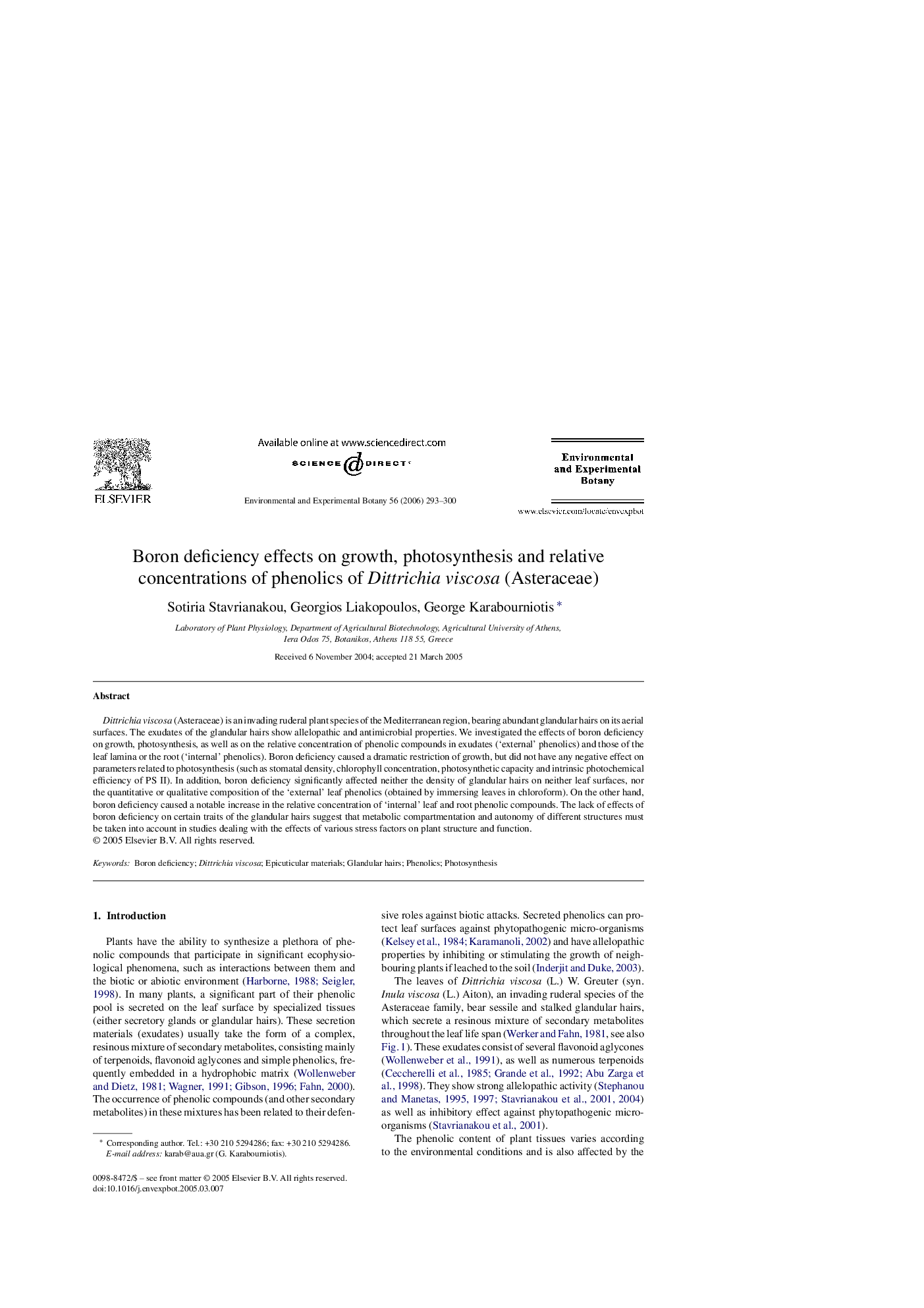| Article ID | Journal | Published Year | Pages | File Type |
|---|---|---|---|---|
| 4555596 | Environmental and Experimental Botany | 2006 | 8 Pages |
Dittrichia viscosa (Asteraceae) is an invading ruderal plant species of the Mediterranean region, bearing abundant glandular hairs on its aerial surfaces. The exudates of the glandular hairs show allelopathic and antimicrobial properties. We investigated the effects of boron deficiency on growth, photosynthesis, as well as on the relative concentration of phenolic compounds in exudates (‘external’ phenolics) and those of the leaf lamina or the root (‘internal’ phenolics). Boron deficiency caused a dramatic restriction of growth, but did not have any negative effect on parameters related to photosynthesis (such as stomatal density, chlorophyll concentration, photosynthetic capacity and intrinsic photochemical efficiency of PS II). In addition, boron deficiency significantly affected neither the density of glandular hairs on neither leaf surfaces, nor the quantitative or qualitative composition of the ‘external’ leaf phenolics (obtained by immersing leaves in chloroform). On the other hand, boron deficiency caused a notable increase in the relative concentration of ‘internal’ leaf and root phenolic compounds. The lack of effects of boron deficiency on certain traits of the glandular hairs suggest that metabolic compartmentation and autonomy of different structures must be taken into account in studies dealing with the effects of various stress factors on plant structure and function.
